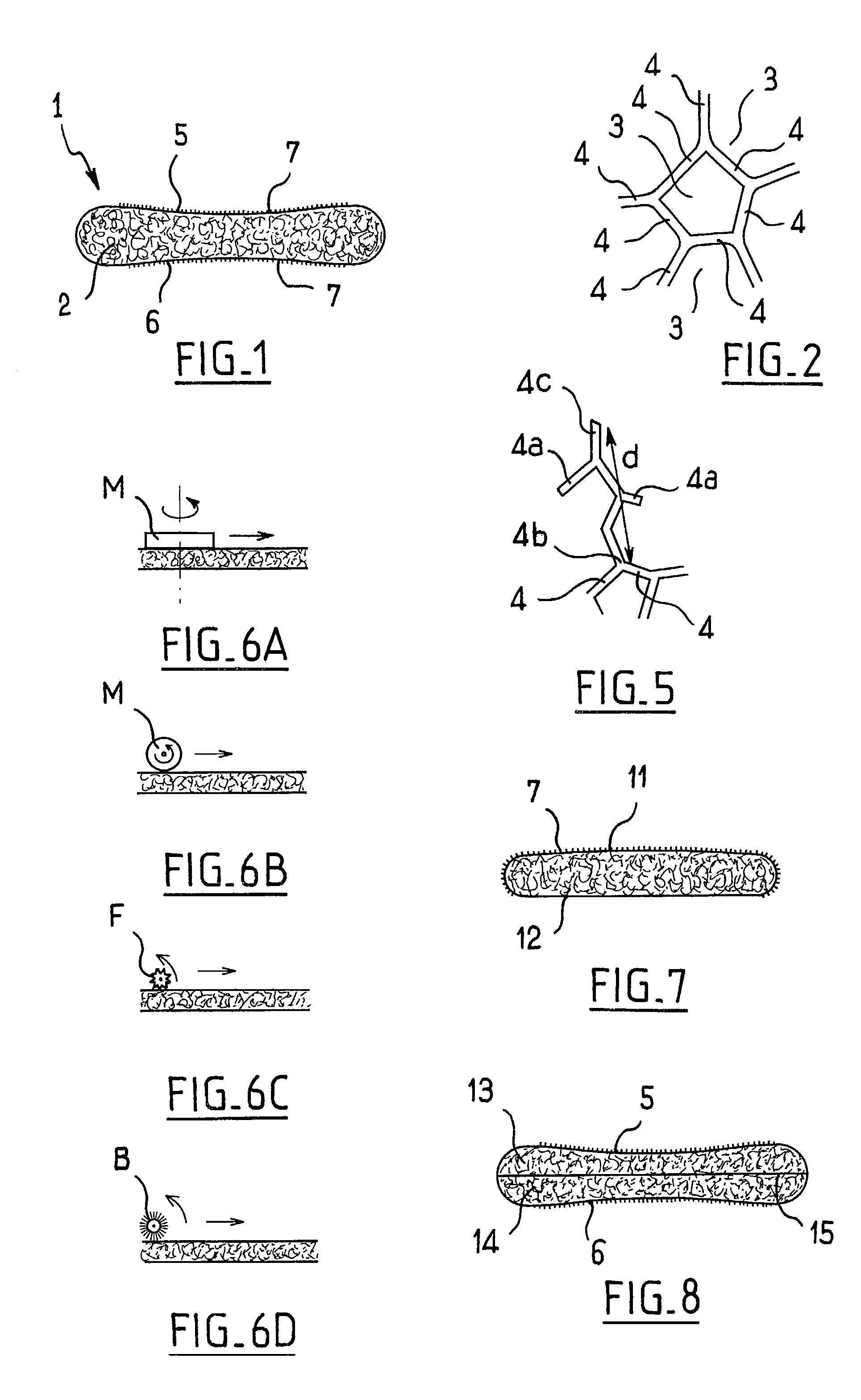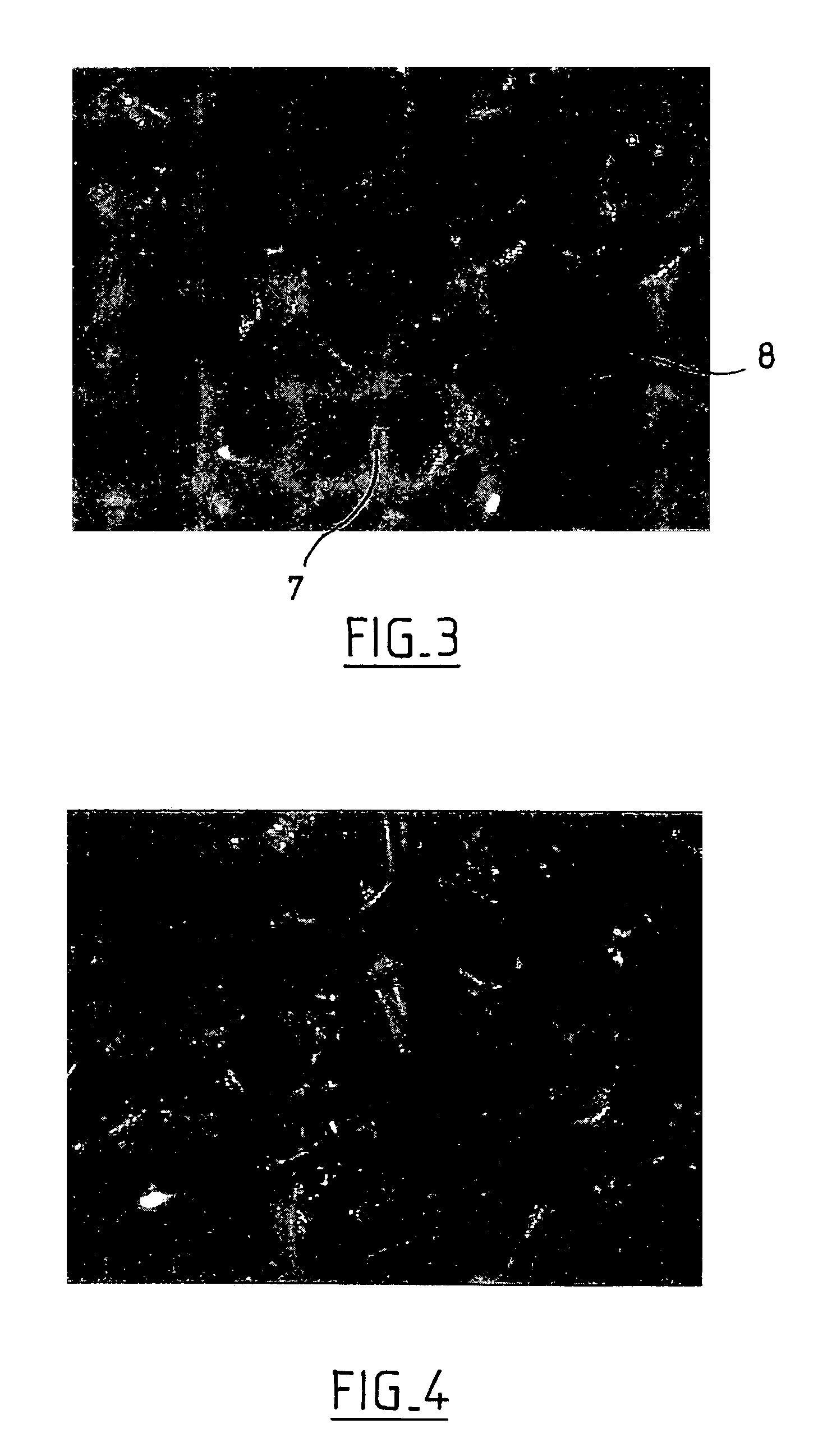Device for applying a substance, in particular a cosmetic, and its method of manufacture
a technology for cosmetics and devices, applied in the direction of hand devices, cleaning devices, packaging goods, etc., can solve the problem of difficult to deposit an appropriate thickness, and achieve the effect of increasing the quantity of substances and allowing the application of flexible members by the application member
- Summary
- Abstract
- Description
- Claims
- Application Information
AI Technical Summary
Benefits of technology
Problems solved by technology
Method used
Image
Examples
Embodiment Construction
[0037]FIG. 1 shows a sponge 1 for use in applying a powder on the skin.
[0038]In the example shown, the sponge 1 is constituted by a block of open-celled foam, e.g., a flexible polyurethane foam. In a variant, the sponge may be made of felt.
[0039]FIG. 2 details that each cell 3 is formed by a plurality of interconnected thread-like walls 4 extending in multiple directions. By way of example, each cell may comprise a succession of four or five walls 4 each of which is substantially rectilinear and together forming a loop.
[0040]The sponge 1 shown in FIG. 1 has two main opposite faces 5 and 6 that are both slightly concave away from the exterior of the sponge 1. Each face 5 and 6 has received an abrasive treatment in order to form down 7 and craters 8 in their respective surfaces. The down 7 is formed by the shredded walls of cells, as can be seen in the photograph of FIG. 3. The surface state of the faces 5 and 6 is thus different from the surface state that would be obtained by cuttin...
PUM
| Property | Measurement | Unit |
|---|---|---|
| depth | aaaaa | aaaaa |
| depth | aaaaa | aaaaa |
| depth | aaaaa | aaaaa |
Abstract
Description
Claims
Application Information
 Login to View More
Login to View More - R&D
- Intellectual Property
- Life Sciences
- Materials
- Tech Scout
- Unparalleled Data Quality
- Higher Quality Content
- 60% Fewer Hallucinations
Browse by: Latest US Patents, China's latest patents, Technical Efficacy Thesaurus, Application Domain, Technology Topic, Popular Technical Reports.
© 2025 PatSnap. All rights reserved.Legal|Privacy policy|Modern Slavery Act Transparency Statement|Sitemap|About US| Contact US: help@patsnap.com



